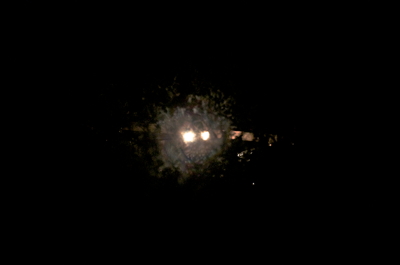
Short Observing Session: Venus, Saturn, M99 Galaxy
Posted: 8 May 2012
The observatory was opened Monday, 7 May 2012, at 1901 MST, 80°F. There were some clouds and the sky was hazy. At 1911 MST, viewed Venus, 77X and 133X. Nice crescent phase. I then decided to check Observer Pro on my iPhone to see what DSOs might be available for viewing after twilight ended but before the waning gibbous moon rose. I selected two objects, but it turned out that one of the objects would be too low in the north to be viewable. I slewed the telescope to the other DSO, M99 (galaxy) to check its position and it was high in the sky.
At 1936 MST, viewed Mars, 77X and 133X. At 133X, the sunrise cloud and a dark area were visible. I then did an AutoStar alignment to correct for accumulated SYNC errors from previous sessions. At 1950 MST, viewed Saturn, 77X. Four moons were visible: Titan, Tethys, Rhea, and Dione. I tried using 133X and 206X to look for the moon Enceladus but it was not seen. Haze or thin cloud was creating poor seeing.
At 2003 MST, I slewed to M99, galaxy. It was faintly seen at 77X against a still-bright sky. Unfortunately, by the time twilight would end, the galaxy would be in the "POD zenith blind spot". By the time it cleared the blind spot, the waning gibbous moon would have risen. I decided to defer imaging M99 until a future session.
Due to the hazy sky and clouds I decided to close up for the night.
Closed the observatory at 2020 MST, 68°F.
As I left the observatory, I was blinded by the extremely bright nuisance lights from a neighbor to the north:

Comments are welcome; use the Comments section below, or you can Email Me. Thanks.
Go to the previous report.
Return to the Cassiopeia Observatory Welcome Page.